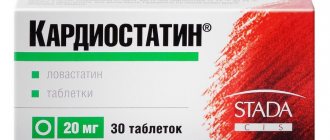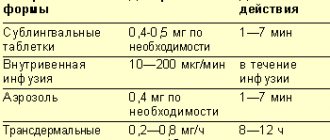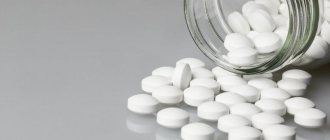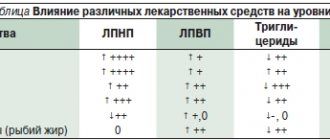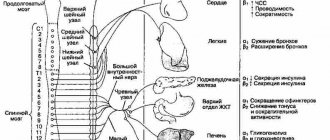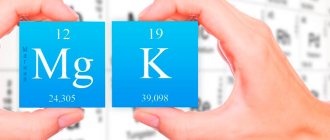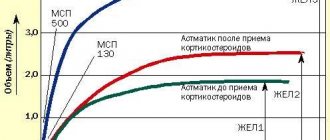Author Igor Bukker
21.05.2021 16:09
Health
Headache. A condition familiar to everyone: both young and old. Some people suffer from migraines all the time.
Is it possible to somehow alleviate the condition or get rid of the disease altogether?
Artur Fadeev , head of the neurology department, medical neurologist, candidate of medical sciences, told Igor Bukker about this in the “Point of View” program .
— The most common cause of headaches is vascular dysfunction, causing problems in the vascular system.
And the most common is arterial hypertension. That is, a persistent increase in blood pressure
When there is instability of pressure, say, in the rise, the wall of the vessel begins to suffer, it is damaged. If it is damaged, then there are two mechanisms:
- first - it is restored;
- second, cholesterol is deposited there and plaques form.
Therefore, most likely, we are talking about instability of pressure in terms of its rise.
But there are people who are hypotensive throughout life - their blood pressure is initially low. And often these people, having, for example, obesity, also suffer from the same plaques, the same problems that hypertensive patients suffer from.
It is clear that hypertensive patients have more problems due to the presence of plaques. But nevertheless, this does not exclude either the development of vasoconstriction or the risk of blood clots with all the ensuing consequences.
— Is it possible to distinguish between increased blood pressure and a migraine, for example, by sensation? They say that with a migraine the head hurts “in the front”, and with pressure it hurts “in the back”. Right?
— If we talk about headaches, they are of two types: primary and secondary.
Primary headaches are the headaches that we treat.
- Migraine, tension headache, cluster pain and so on.
Secondary headaches are headaches that have a cause.
For example, a rise in blood pressure is a cause of pain. And we treat blood pressure here, hypertension, not headaches. And their clinic can be very diverse.
- Most often, people who have a tendency to increase blood pressure experience pressing pain in the back of the head.
And with migraines, most often there are unilateral headaches. Not the forehead. It may be the right side of the head or the left.
- Mostly pain of a pulsating nature.
That is, they have a completely different picture, because the mechanisms of formation and manifestation are completely different. It is usually not difficult to distinguish them.
Relevance
Findings from a new study suggest an increased risk of hypertension in women with migraines, especially those with migraines without aura.
The researchers found that the risk of hypertension increased by 9%, while the risk of hypertension increased by 21% in women whose migraines were not accompanied by aura. Principal investigator Pamela Rist (Boston) presented the study results at the American Academy of Neurology's annual meeting in April.
Is it necessary to do an ultrasound?
— Where to go to find out the cause of your headache? Which specialist? Maybe an ultrasound of the brain and neck - as is usually recommended on the Internet - should be done?
— Ultrasound of the neck vessels is a safe procedure. Everyone does it. As for ultrasound of the vessels of the head, it cannot be done for everyone. Because if a person has a thick bone structure, then ultrasound does not always pass through it, and it will not be possible to see the vessels of the head.
And in general, ultrasound examination of blood vessels is to some extent inaccurate. Using ultrasound, we can see stenosis, narrowing of blood vessels, changes in blood flow speed, but it is impossible to accurately measure how narrowed the vessel is using ultrasound data alone. For this, there is CT with contrast or direct angiography - more informationally reliable studies.
— Who is prescribed an ultrasound of the neck vessels?
— Those who have risks of blood clots, atherosclerotic changes - plaques. We also often prescribe ultrasound of the neck vessels, especially the vertebral arteries, for some forms of dizziness, since the tortuosity of the neck vessels can disrupt the blood supply to the brain, and then turning the head to the side, throwing the head back can one way or another lead to the development of some neurological changes.
Methods
The study was based on data from the Women's Health Study. In the early 1990s. The analysis included approximately 40,000 women aged 45 years and older with no known history of cardiovascular disease, cancer, or other serious illness. The study ended in 2004, but follow-up of the participants continued. In particular, this analysis contains data as of the end of 2015.
At the beginning of the study, women were asked about the presence of migraines with or without aura and the frequency of attacks. This allowed the women to be divided into several groups: no migraine, active migraine with aura, active migraine without aura, and a history of migraine in the past. Follow-up lasted an average of 12.2 years.
Diagnostics
Migraine is diagnosed solely by symptoms. There are no instrumental methods to confirm it yet. However, to exclude other pathologies that are sometimes hidden under the mask of this disease, MRI and CT examinations may be prescribed. If the resulting images do not reveal any alarming changes, then most likely the patient suffers from migraine.
Up to contents
results
- Initially, the analysis included 29,040 normotensive women with known migraine status. Of these, 23,819 women had no history of migraine, 1,516 had active migraine with aura, 2,292 had active migraine without aura, and 1,411 had a history of migraine.
- Compared with women without migraine, those with active migraine with or without aura were slightly younger, more likely to have a history of high cholesterol, more likely to have never smoked, and to rarely or never drink alcohol.
- Compared with women without migraine, women with migraine with aura had a 9% increased risk of hypertension (relative risk (RR), 1.09; 95% CI, 1.02 to 1.18); those with migraine without aura had a 21% increased risk. %(RR, 1.21; 95% CI, 1.14 - 1.28).
- In individuals with a history of migraine, the risk of hypertension was increased by 15% (RR, 1.15; 95% CI, 1.07 - 1.23).
- Results from a subgroup analysis (women with active migraine) demonstrated an association between an increased risk of developing hypertension and an increase in the frequency of episodes of the disease. The mechanism explaining this connection is unclear, the researchers said.
Source:
American Academy of Neurology 2021 Annual Meeting (AAN). Abstract S15.006.
Cardiac safety of triptans in the treatment of migraine attacks
TABEEVA G.R.
., Doctor of Medical Sciences, Professor,
First Moscow State Medical University named after. THEM. Sechenov The article highlights the safety issues of using triptans in the treatment of migraine and their impact on the risk of cardiovascular complications.
The results of a large prospective population-based study are presented, which demonstrated that the use of triptans in patients with migraine is not accompanied by an increased risk of significant cardiovascular events. One of the most common forms of headaches is migraine, which affects approximately 13% of the world's population (28), predominantly females (24). According to a population-based study conducted in the Russian Federation (3), 20.3% of Russians suffer from migraine. Migraine is a very serious disease and represents a significant burden for society and, above all, for patients suffering from frequent attacks of headaches. Unlike many other types of headaches, migraine is characterized by predominantly severe attacks with severe maladaptation, impairment of work capacity and daily functioning. According to the large-scale American Migraine Study II (14), approximately 53% of patients are completely unable to work on attack days. On average, each migraine patient loses 3.2 work days per year. In some patients who are forced to continue working at the time of a headache attack, work activity is reduced by more than 46% (14). Therefore, the vast majority of patients (about 80%) are forced to take painkillers during almost every attack. It is for this reason that migraine headache is the fourth most common cause of emergency room visits, accounting for 1–3% of all cases (23). The reason for referrals is often not only severe, prolonged or difficult to relieve headaches, but also many unusual, difficult to tolerate symptoms that almost always accompany migraine pain. The main treatment strategies for migraine include two main areas: relief of migraine attacks and preventive treatment. The goals of preventive treatment are: reducing the frequency, intensity and duration of attacks, reducing the need for medications to relieve headaches, increasing the level of adaptation and daily functioning. Preventive treatment is not prescribed to all patients, but only to those who suffer from frequent attacks, or attacks that are accompanied by severe maladaptation, as well as in cases where the patients themselves prefer preventive treatment. Relief of attacks, on the contrary, is necessary for almost all patients, both with frequent and rare attacks. The goal of relieving migraine attacks is to eliminate the headache and associated symptoms, as well as prevent the possibility of pain recurrence.
Currently, drugs from several pharmacological groups are used to relieve migraine attacks. 1. Drugs with a nonspecific mechanism of action include simple (paracetamol, codeine, analgin) and combined analgesics (Saridon, Solpadeine, Cafergot), non-steroidal anti-inflammatory drugs (NSAIDs, acetylsalicylic acid, or aspirin, diclofenac, ibuprofen, ketorolac). 2. Drugs with a specific mechanism of action, in turn, include two classes: non-selective 5-HT1 receptor agonists (ergotamine, dihydroergotamine) and selective 5-HT1B\1D receptor agonists (triptans).
How to choose a drug to relieve headaches? The problem of choosing a symptomatic remedy for migraine remains very acute. Long-term clinical practice shows that, despite a wide arsenal of symptomatic drugs for the treatment of migraine, in general, stopping an attack remains an incompletely solved problem and many patients are not satisfied with the drugs they are taking. This may be due to a number of reasons, but the most likely include lack of proper professional supervision, self-medication and suboptimal drug selection, use of nonspecific agents, and delayed administration of medications during a migraine attack. There are many unresolved questions regarding the evaluation of the effectiveness of these agents, the dosage, the duration of effects, the timing of use, the possibility of using a single agent and combining different classes, and the impact on other associated symptoms that may also significantly affect the functional activity of patients during a migraine attack. According to experts, one of the most adequate ways to assess the effectiveness, safety, duration and persistence of the effect (in different attacks and within one attack) is to analyze subjective preferences and patient satisfaction (12).
A comparison of the effectiveness of various classes of abortifacients shows the undoubted advantage of triptans over other classes. Thus, if in general 9-10% of patients are satisfied with taking analgesics, 25-27% are satisfied with NSAIDs, 31-39% are satisfied with ergotamines, then 62-66% are satisfied with triptans (44). Despite this, practical experience shows that most patients use over-the-counter analgesics (simple and combined), which do not have such high anti-migraine activity. Thus, in the international MAZE study, including 5553 patients with migraine in different countries (France, Germany, Italy, Great Britain, USA), it was shown that among the drugs used by patients, 22-54% are simple analgesics and in all countries there is an insufficient use of triptans (3-13%) (16). In Russia, the share of triptans among all drugs for the relief of migraine headaches is even smaller and amounts to less than 1% (1).
In addition, several studies have shown that triptans have the highest patient satisfaction among all classes of abortifacients. So Lantéri-Minet M. et al. (11) analyzed 11,274 patients with migraine. The study involved 2,108 general practitioners who analyzed the degree of satisfaction and dissatisfaction of patients with their drugs for the relief of migraine attacks. To assess the patients' opinions, they were asked several specific questions: 1. Is pain significantly reduced 2 hours after taking the drug? 2. In general, do you tolerate the drug well? 3. Do you use one remedy or do you use additional pain relief? 4. Does taking this medication allow you to quickly return to normal social, professional, and family activities? The degree of satisfaction and dissatisfaction was ranked into three categories according to the value of the visual analogue scale (VAS) (11).
The authors found that among the most commonly used drugs (triptans, aspirin, NSAIDs, ergotamine drugs), the highest overall satisfaction from patients is characterized by triptans (88.1%), the weakest satisfaction is by aspirin, other NSAIDs, opiates and ergotamine (34-40 %) and minimal – paracetamol (18.7%). It should be emphasized that the differences in this indicator between patients consuming triptans and all patients not consuming triptans were quite significant (83.1% and 32.2%, respectively, P < 0.001). At the same time, 36.6% of patients were completely satisfied with triptans, while 3.8% were satisfied with aspirin and other NSAIDs, paracetamol-containing drugs, and 10.3% of respondents were with ergotamine drugs (Fig. 1) (11).
In general, triptans are highly effective, well tolerated, and have a similar pharmacokinetic profile (8,29). The differences between oral triptans taken at therapeutic doses may seem relatively small, but they are clinically significant for individual patients. Which triptan to choose? Patient clinical characteristics and preferences are extremely variable, and individual response to a particular triptan cannot be predicted. Therefore, doctors have to recommend that patients try more than one triptan during different attacks to determine which drug is most effective. In order to compare the effectiveness of seven members of the triptan class, a large meta-analysis of 53 clinical studies was conducted, which included 24,089 patients (7). Three representatives of the triptan class (eletriptan 80 mg, rizatriptan 10 mg and almotriptan 12.5 mg) were characterized according to standard efficacy parameters (full analgesic effect and pain relief after 2, 4 and 24 hours, persistence of the effect within 24 hours after dosing of the drug). as being as close as possible to the “ideal” drug for relieving migraine attacks.
The emergence of a new class of selective 5-HT1B\1D receptor agonists, known as triptans, was not accidental; it is based on numerous pharmacological studies. Due to their high affinity for 5-HT1D and 5-HT1B receptors and the lack of activity in relation to adrenergic, dopaminergic, muscarinic, histamine receptors and serotonin receptors of other subtypes, triptans as antimigraine drugs have a mechanism of action justified from the point of view of pathophysiology: they cause a narrowing of excessively dilated cranial vessels, inhibit the release of pro-inflammatory and vasoactive peptides (CGRP, SP), inhibit the transmission of pain at the level of brain stem formations (29). Triptans, as effective and generally well-tolerated drugs for the acute treatment of migraine attacks, are recommended in particular by the American Academy of Neurology as first-line treatment for moderate to severe migraine headache or for any severity of headache when nonspecific agents do not provide adequate relief (27). .
To date, extensive experience has been accumulated in the use of triptans in the treatment of migraine attacks. The presence of numerous clinical studies of the effectiveness and safety of triptans makes it possible for their wider use in the treatment of migraine headaches. One of the factors preventing the wider use of triptans in clinical practice is the presence in migraine patients of a variety of subjective sensations in the form of heaviness, chest compression, tingling and numbness in the chest, lower esophagus, which sometimes spread to other parts of the body. Taking into account all these circumstances, the analysis of the causes of these manifestations and their connection with the use of triptans deserves special analysis.
Chest pain during a migraine attack has been described as an extremely rare manifestation of migraine since 1974 (25). Traditional descriptions of chest pain during a migraine attack are in the picture of “classical” migraine (migraine with ophthalmic aura). Clinical and epidemiological studies show a definite association between migraine and ischemic diseases in general. In most of these studies, the authors point to an obvious connection between migraine and stroke. Thus, a large population-based study, the Physicians' Health Study (4), showed a doubling of the risk of ischemic stroke in men with migraine after 40 years. Although another population-based prospective study (20) confirmed a doubling of the risk at a young age and simultaneously showed its reduction in older people. On the other hand, it is well known that paroxysmal pain in the region of the heart, especially in young people, is often not associated with coronary causes. In these cases, there is a high frequency of psychogenic causes of cardialgia, muscle pain syndromes, as well as cardiac complaints, in particular in the picture of panic attacks. When analyzing these observations, the question arises as to the origin of these triptan-associated cardiac complaints. On the one hand, the listed phenomena may be directly related to a migraine attack as such, and on the other hand, they may be associated with the use of abortifacients. Given the known vasoconstrictor effects of triptans, the latter circumstance requires more careful analysis.
Experimental work shows that various representatives of the triptan class have the property of selectively influencing cerebral blood flow, while the degree of vasoconstriction of cerebral vessels is several times higher than that in the coronary vessels. Thus, eletriptan, sumatriptan, rizatriptan, frovatriptan, almotriptan, as well as donitriptan at therapeutic plasma concentrations demonstrated several times greater constriction power of the middle meningeal artery compared with the effect on the coronary arteries (15,30,31).
Preclinical studies of the selectivity of the effects of antimigraine drugs have shown that different representatives of triptans also have differences in the characteristics of the selective action in question. Thus, a comparative analysis of these effects of eletriptan and sumatriptan (15) on isolated clinically healthy arteries showed that the constrictor effects of eletriptan on the cranial vessels were 86 times greater than the degree of influence on the coronary arteries, while for sumatriptan these effects differed by 30 times. Even at concentrations exceeding 3 times the Cmax, eletriptan at a dose of 80 mg caused only a small plasma concentration-dependent decrease in coronary artery diameter (Fig. 2).
A detailed study of the selective effects of modern triptans using the example of eletriptan (ELE) was undertaken in 6 comparative studies of 11,000 patients in which more than 74,000 migraine attacks were analyzed (18). The results show the high effectiveness of eletriptan in relieving migraine attacks in doses of 20, 40 and 80 mg. In general, the effectiveness of 20 mg eletriptan is comparable to 100 mg sumatriptan. As a selective agonist of 5-HT1B\D receptors, eletriptan has a high affinity for these receptor subtypes. A study of the clinical aspects of the cranial selectivity of eletriptan demonstrated that traditionally described cardiac symptoms (heaviness, pressure pain, tightness and other similar symptoms) were detected in 0.9% of migraine attacks relieved by ELE-20 mg, in 0.8% of cases using ELE-20 mg. 80 mg and in 1.1% of patients using traditional means of pain relief. No cases of cardiac arrhythmias, myocardial infarction, or sudden death were reported in these studies (18).
To confirm the results of preclinical studies of the cardiac safety of eletriptan, angiographic studies were undertaken in patients presenting with various complaints of chest sensations (10). The degree of reduction in coronary vessel diameter after taking eletriptan was insignificant and was detected only in series with high plasma concentrations of the drug, which allowed the authors to conclude that eletriptan, in particular, has a high degree of cardiac safety in patients without signs of coronary artery disease. These findings support the results of traditional ECG monitoring (6), which show that eletriptan had no effect on QT prolongation and other relevant parameters.
The effect on blood pressure (BP) characteristic of the triptan class is also characteristic of eletriptan (15,34). The relationship between the concentration of the drug in plasma and the level of arterial hypertension is not so clearly linear: the initial asymptomatic rise in blood pressure to 10 mm Hg. Art. subsequent increases in drug concentration are accompanied by a slight additional hypertensive effect (19).
The effects of triptans on isolated coronary arteries have been well studied in experimental studies. Meanwhile, their effect on patients with coronary diseases has been studied less. The accumulated clinical experience predetermined the need for clinical and experimental studies of the safety of triptans in patients with coronary artery diseases. Angiographic studies conducted as part of a series of studies in migraine patients with less than 50% coronary stenosis showed that sumatriptan (2 studies), naratriptan (1 study) and eletriptan (1 study) at concentrations corresponding to or exceeding therapeutic doses, when taken orally, they do not cause a clinically significant change in the diameter of the coronary arteries (21).
In a study of 60 migraine patients without clinical or angiographic evidence of coronary disease, coronary angiography was performed to evaluate the vasoconstrictor effects of intravenous eletriptan at supratherapeutic plasma concentrations (three-fold increase in Cmax relative to 80 mg orally) and subcutaneous sumatriptan (6 mg) compared with placebo (16). The maximum changes in the diameter of the coronary arteries were identified: for eletriptan - 22%, for sumatiptan - 19%, for placebo - 16%. These results indicate that in patients with normal coronary arteries, supra-therapeutic doses of eletriptan produce minimal clinically significant coronary constriction similar to that observed in patients receiving standard doses of subcutaneous sumatriptan or placebo.
A study of the effect of triptans on coronary blood flow using positron emission tomography (PET) in 19 women with migraine and a slight risk of coronary disease showed no significant change in regional myocardial perfusion in response to subcutaneous administration of sumatriptan, as well as to placebo, although in 4 of the patients studied Tension was noted in the chest and neck area (13).
An ECG study was performed in 20 patients with migraine who had a history of chest symptoms after using subcutaneous, intravenous, or oral sumatriptan (33). Three of them experienced similar symptoms after taking placebo. In no case did the ECG study record signs of myocardial ischemia, even if these symptoms recurred. The authors concluded that these symptoms cannot be caused by ischemic changes in the myocardium. Similar conclusions have been drawn from epidemiological studies (25).
The issue of the cardiac safety of triptans has been specifically studied in large-scale clinical studies. One of the largest prospective population-based studies was conducted between 1995 and 1999 in 20 US states to identify the serious cardiovascular consequences of migraine and their possible association with the use of modern antimigraine drugs (32). The study involved 130,000 migraine sufferers and approximately the same number of patients without migraine headaches. In these groups, during the entire observation period, the frequency of significant cardiovascular events was studied: myocardial infarction, stroke, cardiac arrhythmias, unstable angina, transient ischemic attacks (TIA). Among patients with migraine, the frequency of these events was also analyzed in patients taking (50,383 patients) and not taking (80,028 patients) selective 5-HT receptor agonists. In general, patients with migraine had a higher incidence of coronary heart disease, cerebrovascular disease, arterial hypertension and hyperlipidemia, as well as unstable angina and TIA compared with persons without migraine cephalgia. When analyzing the incidence of cardiovascular diseases, it was found that in the group of migraine patients, among those using and not using triptans, there were no significant differences in the incidence of myocardial infarction, stroke, cardiac arrhythmias, unstable angina and TIA. And the death rate was even lower in patients using triptans. These results led the authors to conclude that the use of triptans in migraine patients is not associated with an increased risk of significant cardiovascular events (38).
Thus, the study of these selective properties of triptans is of great practical importance for substantiating the cardiac safety of modern representatives of triptans. A comparison of the results of clinical and experimental studies does not allow us to associate the appearance of so-called triptan-associated cardiac complaints with objective cardiovascular disorders in patients with migraine. To explain them, other possible non-ischemic causes of these disorders should be involved. Their origin may be due to the presence of generalized vasospastic reactions, impaired motility of the esophagus, pulmonary circulation, or energy metabolism of the skeletal muscles of the chest wall, as well as the development of central sensitization processes (2). Cases of serious cardiovascular events, both in clinical trials and in clinical practice, are extremely rare and their occurrence is not associated with the fact that patients are using triptans to relieve headache attacks. The safety profile of triptans has been well studied. Triptans have a low risk of serious cardiovascular side effects in patients without evidence of coronary disease, based on clinical trial data. This allows triptans to be recommended to patients at low risk of coronary disease without prior assessment of cardiac status.
LITERATURE
1. Kutsemelov I.B., Tabeeva G.R. Epidemiology of primary headache. Pain 2004; 4(5):25-31. 2. Tabeeva G.R. Cardiac safety of the newest triptans Pain, 2006, No. 4, pp. 39-47. 3. Ayzenberg I., Katsarava Z., Sborowski A., Chernysh M., Osipova V., Tabeeva G., Yakhno N., Steiner TJ. The prevalence of primary headache disorders in Russia: A countrywide survey. Cephalalgia 2012 32(5): 373-381. 4. Buring JE, Heberg P, Romero J et al. Migraine and subsequent risk stroke in Physicians' Health Study. Arch Neurol. 1995; 52:129-34. 5. Cortijo J, Marti-Cabrera, Bernabeu E et al. Characterization of 5-HT receptors on human pulmonary artery and vein: functional and binding studies. Br J Pharmacol 1997; 122:1455-63. 6. Diener HC., Jansen JP., Pascual J., Pitei D., Steiner TJ. Efficacy, tolerability and safety of oral eletriptan and ergotamine plus caffeine (cafergot) in the acute treatment of migraine: a multicenter, randomized, double-blind, placebo-controlled comparison. Eur Neurol. 2002; 47:99-107. 7. Ferrari VD., Roon KI., Lipton RB., Goadsby PJ. Oral triptans (serotonin 5-ht1B\1D agonists) in acute migraine treatment: a meta-analysis of 53 trials. Lancet 2001;358:1668-75. 8. Fox AW. Comparative tolerance of oral 5-HT1B/1D agonists. Headache 2000;40:521–527. 9. Goadsby PJ, Ferrari MD, Olesen J et al. Eletriptan in acute migraine: a double-blind, placebo-controlled comparison to sumatriptan. Neurology 2000; 54:1560-3. 10. Goldstein JA, Massey KD, Kirbi S et al. Effect of high-dose intravenous eletriptan on coronary artery diameter. Cephalalgia 2004; 4:515-521. 11. Lantéri-Minet M., Massiou H., Romatet, S., Barba A., Lucas C., Allaf B. An Instrument to Assess Patient Perceptions of Satisfaction With Acute Migraine Treatment (EXPERT Study). Headache 2011;51:590-601. 12. Lantéri-Minet M.What do patients want from their acute migraine therapy? EurNeurol. 2005;53(Suppl.1):3-9. 13. Lewis PJ, Barrington SF, Marslsen PK et al. A study of the effects of sumatriptan on myocardial perfusion in healthy female migraineurs using ¹³ NH3 positron emission tomography. Neurology 1997; 48:1542-50. 14. Lipton RB., Stewart WF., Diamond S., Diamond ML., Reed M. Prevalence and burden of migraine in the United States: data from the American Migraine Study II. Headache 2001;41(7):646-57. 15. Maassen VanDenBrink A., van den Broek RW., de Vries P., Bogers AJ., Avezaat CJ., Saxena PR. Craniovascular selectivity of eletriptan and sumatriptan in human isolated blood vessels. Neurology 2000; 55:1524-30. 16. MacCregor EA., Brandes J., Eikermann A. Migraine prevalence and treatment patterns: The global migraine and zolmitriptan evaluation survey. Headache 2003; 43:19-26. 17. MacLean MR., Clayton RA., Templeton AG et al. Evidence for 5-HT1-like receptor – mediated vasoconstriction in human pulmonary artery. Br J Pharmacol 1996; 119:277-82. 18. Mathew NT., Hetiarachchi J., Alderman J. Tolerability and safety of eletriptan in the treatment of migraine: a comprehensive review. Headache, 2003; 43:962-74. 19. Mathew NT., Schonen J., Winner P., Muirhead N., Sikes CR. Comparative efficacy of eletriptan 40 mg vs sumatriptan 100 mg. Headache 2003; 43:214-222. 20. Merikangas KR., Fenton BT., Cheng SH., Stolar MJ., Risch N. Association between migraine and stroke in large-scale epidemiological study of the United States. Arch Neurol 1997; 54:362-8. 21. Muir DF, MacCanu GP, Swan L et al. Haemodynamic and coronary effects of intravenous eletriptan, a 5-HT1B\1D receptor agonist. Clin Pharmacol Ther 1999; 66::85-90. 22. Pascual J., Munoz R., Leira R. An open-label preference study with sumatriptan 50 mg and zolmitriptan 2.5 mg in 100 migraine patients Cephalalgia 2001;21:680-4. 23. Pitts SR, Niska RW, Xu J, Burt CW. National Hospital Ambulatory Medical Care Survey: 2006 emergencydepartments summary.NatlHealthStatReport. 2008;7:1-38. 24. Rasmussen BK., Jensen R., Schroll M. Epidemiology of headache in a general population – prevalence study. J Clin Epidemiol 1991;44:1147-1157. 25. Sacco S., Ripa P., Grassi D., Pistoia F., Ornello R., Carolei A., Kurth T. Peripheral vascular dysfunction in migraine: a review. The Journal of Headache and Pain 2013,14:80. 26. Sandrini G., Färklilä M., Burgess G., Foster E., Haughie S. Eletriptan vs sumatriptan: a double-blind, placebo-controlled multiple migraine attack study. Neurology 2000; 59:1210-7. 27. Silberstein SD. Practice parameter: evidence-based quidelines for migraine headache (an evidence-based review) – report of the quality standards subcommittee of the American Academy of Neurology. Neurology 2000; 55:754-62. 28. Stovner LJ, Hagen K, Jensen R, et al. The global burden of headache:A documentation of headache prevalence and disability worldwide. Cephalalgia.2007;27:193-210. 29. Tfelt-Hansen P, De Vries P, Saxena PR. Triptans in migraine: a comparative review of pharmacology, pharmacokinetics and efficacy. Drugs 2000;60:1259–1287. 30. Van den Broek RW., Maassen VanDenBrink A., De Vries R., Bogers AJ., Stegmann AP., Avezaat CJ., Saxena PR. Pharmacological analysis of contractile effects of eletriptan and sumatriptan on human isolated blood vessels. Eur J Pharmacol 2000; 407:165-73. 31. Van den Broek RW., Maassen VanDenBrink A., Mulder PG., Bogers AJ., Avezaat CJ., John GW., Saxena PR. Comparison of contractile responses to donitriptan and sumatriptan in the human middle meningeal and coronary arteries. Eur J Pharmacol 2002; 443:125-32. 32. Velentgas P., Cole A., Mo J., Sikes CR., Walker AM. Severe vascular events in migraine patients. Headache 2004; 44:642-51. 33. Welch KM, Mathew NT, Stone P et al. Tolerance of sumatriptan: clinical trials and postmarketing experience. Cephalalgia 2000; 20:687-95.
Causes of migraine
Migraines and headaches are caused by pressure changes, intoxication or infection.
Occipital pain is often a consequence of cervical osteochondrosis, spondylosis, stiffening of the neck muscles, and hypertension. Frontal headaches are often caused by frontal sinusitis or a pinched occipital nerve. Severe headaches can also be caused by sinusitis and the consequences of traumatic brain injuries. Long-term pain may indicate a brain tumor. A throbbing headache can be caused by otitis media, glaucoma, sinusitis, etc. Prolonged headache is caused by encephalitis, tuberculosis, sexually transmitted diseases, etc.
Frequent headaches not associated with chronic diseases are caused by numerous factors:
- stress;
- overvoltage;
- infections;
- food intolerance;
- side effects of medications;
- parasite bites.
Consequences of migraine
Prolonged headache reduces a person’s performance and leads to loss of attentiveness, which can cause various undesirable and sometimes dangerous consequences at work.
In addition, constant headaches can be symptoms of serious diseases: hypertensive, endocrine, related to kidney function and brain activity. Therefore, if the headache is periodic or constant, it is necessary to consult a doctor who will issue a referral for examination by a more specialized specialist.
List of effective headache pills
Often, medications popular among doctors and their patients cope only with pain caused by changes in weather, physical or psycho-emotional stress. They are powerless against migraines. This is explained by the pathogenetic mechanisms of the development of the attack.
Below is a list of tablets for headaches, after the use of which a migraine attack either weakens or completely stops.
Sumatriptan
Sumatriptan selectively acts on receptors localized to the cranial blood vessels in the brain. As a result of stimulation, they narrow. Headaches disappear along with neurological disorders characteristic of migraines.
The optimal dose is 0.05 g. For acute, piercing pain, it is allowed to double it. The drug is intended for occasional use.
Rizatriptan
Agonist of nerve endings sensitive to serotonin. The anti-migraine effect is based on the ability of the active substance to constrict meningeal vessels, suppress neurogenic inflammation, and reduce pain effects. It appears approximately half an hour after taking the product. Single dose - 0.01 g, daily dose - 0.03 g. The drug must be taken at intervals of at least two hours.
Relax
Pharmacological properties are due to the main ingredient - eletriptan. They are identical to Sumatriptan, but are more pronounced due to greater selectivity towards serotonin receptors. The instructions recommend taking the drug in a dose of 0.04 g at the first signs of a migraine attack. But the effect will also be expected during a prolonged attack.
Zolmitriptan
Under the influence of Zolmitriptan, vasoconstriction occurs and the release of neuropeptides is inhibited. It should be noted that it is not able to prevent an attack. Zolmitriptan is used to relieve it. Treatment begins with taking one tablet at a dosage of 2.5 mg. If the intensity of the pain decreases slightly, you are allowed to take another one. But using more than four pieces per day is strictly prohibited.
Pentalgin
Thanks to its complex combined composition, Pentalgin quickly eliminates pain, inhibits the spread of inflammation, and reduces body temperature. This is one of the few remedies with a wide range of indications that can also cope with migraines. It is taken one tablet up to three times a day at equal time intervals. The duration of the therapeutic course is no more than five days.
The list of contraindications is significant. Please read the instructions carefully before use!
Migrenol
The composition is represented by an analgesic-antipyretic paracetamol with pronounced analgesic, antipyretic and weak anti-inflammatory properties. As well as the tonic component caffeine, under the influence of which physical and mental performance increases. The optimal dose is two tablets, the frequency of administration is no more than four times a day at equal intervals.
Ibuprofen
The active substance blocks special enzymes that trigger the production of mediators of pain, inflammation, and fever from arachidonic acids. The analgesic effect develops approximately a quarter of an hour after use and lasts about six hours or more. The daily dose varies from 0.6 to 0.8 g, divided into three doses. If there is no desired effect after two days of therapy, a doctor’s consultation is required.
Spasmalgon
The effect of the drug is due to the non-narcotic analgesic metamizole, the myotropic antispasmodic pitofenone, and the m-anticholinergic ingredient fenpiverinium. After its use, the severity of the pain syndrome decreases, muscle spasms are relieved, and inflammatory swelling resolves. Doses depend on the patient's age. Adults are prescribed one or two tablets up to three times a day.
Nalgesin
It exhibits powerful analgesic, antipyretic and anti-inflammatory activity, based on the ability of the main component to non-selectively inhibit the production of prostaglandins. The dosage regimen and duration of therapy are individual. Do not take more than 2.0 g per day due to increased risk of overdose.
There should be equal intervals between doses so that the analgesic effect is maintained throughout the day.
Amigrenin
The use of the drug leads to a selective narrowing of the blood vessels of the brain, inhibition of the activity of the trigeminal nerve. The patient’s well-being improves half an hour after administration, including due to the elimination of visual and auditory disturbances characteristic of a migraine attack. The initial dose is 0.1 g. If necessary, it can be doubled.
